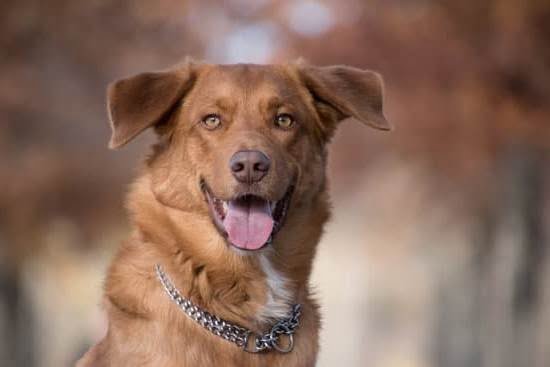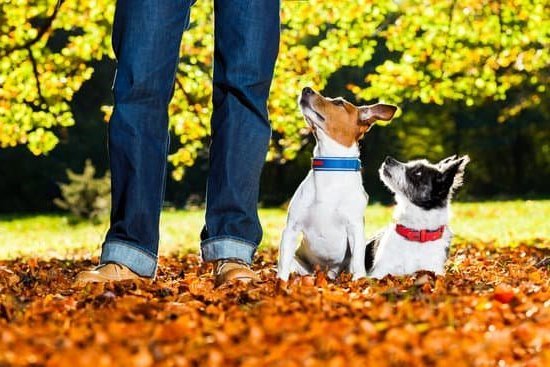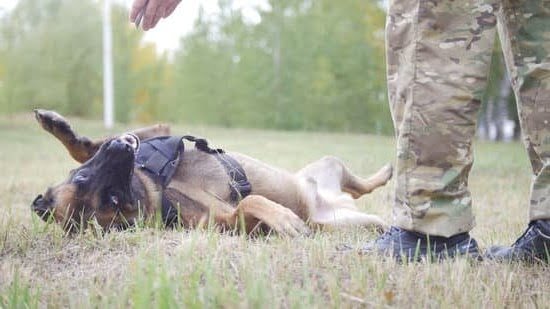Introduction
House training is an important part of domestic pet ownership, as it helps to keep both pets and their owners comfortable. Accidents in the house can cause significant harm if they are not taken care of properly, meaning it is essential to train your dog correctly. However, accidents still happen from time to time even with well-trained animals. So why do house trained dogs pee in the house?
The most common cause for a house trained dog peeing inside the home is stress or anxiety. Dogs are sensitive animals, and a disruption of their daily routine can quickly lead to an accident inside the home. Similarly, something unfamiliar such as a new person entering the home may be enough to trigger an anxious response from a pet that causes them to urinate accidentally.
Other reasons why house trained dogs may urinate inside include separation anxiety or boredom from being left alone for extended periods of time; health issues such as urinary tract infections; or simply sniffing out smells belonging to other animals that make them feel the urge to mark their territory with urine.
If you have a house trained dog who starts urinating indoors, it’s important to try and determine what the underlying cause may be. Restricting access to certain parts of the home while figuring out what is causing your pet discomfort can help prevent further accidents taking place in this same area again. Additionally, it is also important to ensure that you clean up any mess immediately in case your pet decides to revisit this spot again in future. Creating clear boundaries with visual pieces of equipment such as gates and barriers can help show your pet what areas are off limits for them and minimize confusion about where they should go instead. With patience and consistency, owners can successfully train their house-trained canine companions away from these undesirable behaviours and instead reinforce more positive ones so that everyone involved can enjoy worry free living!
Common Causes of House Training Failures
1. Punishing a dog for soiling inside: Punishment should not be used to try and teach a dog good house training habits. This causes unnecessary stress and can even perpetuate the problem.
2. Not following up: Dogs are creatures of habit and routines are important in any successful house training plan. If the owner fails to follow through with the set routine, either by accident or deliberately, this can cause setbacks as it completely disrupts what the dog has learned thus far.
3. Anxiety or fear response: Some dogs may exhibit signs of anxiety when they’re required to soil outside their designated area (usually due to environmental changes) which can cause them to return indoors and resoil inside their home or space.
4. Medical issues: In some cases there can be an underlying medical issue causing urinary incontinence, infections or general discomfort that will make soiling indoors more likely
5. Lack of supervision: Dogs who have access to certain areas unsupervised may take advantage of this freedom and could use those areas for relieving themselves instead of waiting for their potty break moment outdoors
6. Poor communication & Understanding: Dogs already find it difficult knowing how to communicate with us a lot of time, and if we aren’t clear with our commands or don’t reward good behaviour effectively then they may not understand why they’re being reprimanded for soiling inside the house
Excitement or Fear
Dogs may pee in the house for a variety of reasons, but two of the most common triggers are excitement and fear. If your pup is excited, they may lose bladder control or express their excitement in other ways that can result in messes around the house. Fear can also cause dogs to urinate out of anxiety or panic. Common triggers for anxiety-related accidents include strangers, loud noises, changes in routine, and certain environments.
It’s important to recognize potential triggers for your pup before any accidents occur and to create a safe space for them when they feel anxious or scared. This could be as simple as keeping a crate with their favorite toys and blanket on hand at all times, so they have a comfortable spot they can retreat to when faced with something stressful. Additionally, you’ll want to make sure you reward good behavior whenever your pup acted composed and relaxed in situations that used to cause them stress. Lots of praise and treats should help your dog realize that there’s nothing to fear from these scenarios over time. Otherwise, if nothing seems to work it’s always a good idea to consult your veterinarian about discussing potential medication options for addressing their anxieties and fears moving forward.
Submissive Urination
Submissive urination is a common problem among house-trained dogs and can be a sign of submissiveness or nervousness. It occurs when a dog is in the presence of an owner or another person and urinates out of fear or submission, either in anticipation of being punished, scolded, or as an act of appeasement to the dominant figure.
Characteristics of this behavior can include crouching low to the ground with ears laid back, tail tucked between legs, and some licking around the mouth area. This behavior is difficult for many pet owners to comprehend due to it being completely opposite from instinctual canine behaviors such as growling and barking which are used to show dominance.
The mindset of submissive dogs is similar to that of people who respond in anxious or shy ways when communicating with those higher up in their social circles. Dogs who submit in this way are looking for reassurance and acceptance from their owners, though unfortunately they are usually met with frustration due to the mess left behind by them.
To manage this behavior one should remain calm when disciplining their pup, while offering compliments and reward-based motivation rather than punishing them after they have peed in the house. By being patient and consistent with your pet’s training you can help prevent any further episodes of submissive urination. Additionally providing plenty affection when your dog behaves properly will help reinforce positive behaviors which could reduce their anxiousness while around you.
Medical Causes
Many medical conditions can contribute to house training failures in dogs. Issues like a urinary tract infection, bladder infection, or diabetes might cause your pet to have an increased urge to urinate more often than usual. Additionally, they may have difficulty communicating this need or confusion between what is ok indoors and outdoors. Other medical abnormalities causing incontinence are kidney stones or diseases; even painful conditions can be enough to discourage healthy communication with owners for what is acceptable toileting behavior. Lastly, Cushing’s disease can also be at play here, although most animals with Cushing’s are better able to build up control as opposed to losing control over their body.
It’s important for owners of house trained pets that begin having accidents indoors due to suddenly changed behavior and habits to bring their dog to the vet for a proper health assessment as soon as possible. An examination by a professional veterinarian might uncover any medical issues causing the problem, and if you suspect something else could be the issue, don’t hesitate to voice those concerns and get your pup further checked out. If a medical condition is determined as the root of the issue then appropriate treatment must start right away!
Territorial Marking
Dogs have an instinctive drive to mark their territory by peeing in order to mark their area and keep other dogs away. This behavior is known as territorial marking and can be seen in house trained dogs that may be trying to establish dominance and security with the members of their family. Territorial marking can often occur when your dog is not getting enough exercise, has recently encountered a new pet or visitor, or when it senses a change in the home, such as rearranging furniture, cleaning or redecorating.
To prevent this behavior from occurring, it’s important to ensure that your pet gets plenty of exercise each day. Try providing a variety of toys for them to play with, allowing them to sniff and explore on walks, and taking them to socialization classes so they can properly interact with other pets. You should also make sure that any changes within the house are done gradually and without disruption so that your pup does not feel unsettled. Lastly, if you think territorial marking could be the cause of why your house-trained dog is peeing in the house, you should consult with a veterinarian or animal behaviorist who can assist you further.
Behavioral Issues
House trained dogs peeing in the house is a common problem. There can be a few different causes if this behavior begins to happen. Many of them are related to behavioral issues that have gone unnoticed or been overlooked by pet parents.
First, it could indicate anxiety or fear, which can lead to inappropriate peeing when they feel uncomfortable and scared in their home environment. To address this, pet owners should provide more exercise and stimulation for the dog, such as daily walks and regular play sessions with other friendly dogs. They should also create a safe den-like space in the home for the pup that offers familiar smells and items to help them feel secure. Anxious pups may benefit from puppy-safe natural calming supplements like hemp products to reduce stress alongside any necessary veterinary treatment.
Second, medical problems can sometimes cause house training regressions due to difficulty controlling certain bodily processes such as bladder control issues like urinary incontinence or urinary tract infections. If your pup starts to exhibit signs of frequent urination or pain during urination, it’s important to take them for vet care right away so these underlying medical issues can be identified and treated if needed.
Finally, some behavioral changes can develop after traumatic experiences like being separated from an owner or moving into a new home environment that they haven’t adjusted to yet. In this case, pet owners should work with animal behaviorists who specialize in calming fearful pups and providing behavior modification treatments such as positive reinforcement/force free clicker training or T Touch massage therapy methods to help them adjust more quickly according to their individual needs.
Training Strategies
When it comes to house training your pup, consistency is key. Create a schedule of regular trips outdoors for the pup to go to the bathroom. Additionally, be sure that the pup is taken out first thing in the morning, after naps, and after meals. When on these trips outside make sure that you take the pup to the same spot every time so that he can learn to associate this area with going to the bathroom. Also, spending extra time outside after he/she goes to reward them with verbal praise and treats may also help establish a positive bathroom behaviour.
Other important strategies include keeping an eye on your pup throughout the home and supervision when they are not in their kennel/crate. Make sure that you take your pup outside at least once every 2 hours while awake and attending to them if necessary by taking them outside directly or crating them immediately so that they understand that toileting inside is not acceptable behaviour. If accidents do happen try not to punish your dog but rather clap or make some other sound signal before picking up and taking him out. Any type of punishment has been linked to making potty training more difficult for dogs as it impacts their trust towards owners and creates further confusion about what is expected from them.
Managing Conflicts
House trained dogs can sometimes seem to regress and start peeing in the house, but luckily this behavior can be avoided or fixed. It is important to keep an eye on pets during times when they might express unhealthy disruptive behaviors as they may be trying to communicate something such as distress, fear, discomfort or insecurity.
To deescalate conflicts between pets in the same household and avoid accidents, first identify the triggers of their conflict. This could include lack of boundaries and respect between animals when it comes to their respective territories in the home, their food sources – both water and food dishes – belongings such as toys or furniture, dominance dynamics changes within their social structure, stressful events involving people or other animals that could cause tension among them, etc. When possible try to provide calm environments for your dog in which it feels comfortable and create positive associations by rewarding desired behaviors with treats or toys. Additionally make sure that everyone in the home interacts properly with your pet emphasizing rules while avoiding avoidance behavior and punishment – together with respect of individual territories help build a competitive connection where everyone gets along nicely! Lastly have treats available during meetings and supervised play times so all animals stay focused on you rather than each other increasing communication skills and preventing territorial quarrels.
Summary
There are many reasons why a house trained dog may start peeing in the house, such as anxiety, illness, changes to their routine or terrain and certain behaviors. The key is to recognize why your dog might be engaging in this behavior so you can address it appropriately.
Anxiety or stress may be the cause of your dog’s newfound need to pee in the house. Something may have changed recently in their environment such as new people or animals being introduced, recent traveling, or a change to their regular routine. Addressing the underlying cause and providing support will help to alleviate anxiety and reduce your pet’s likelihood to urinate inside the home.
Illness can also be the source of this undesirable behavior; if your pet is uncomfortable for any reason then it will likely lead them to seek out a place inside their home that feels more comfortable for them. If you have noticed a sudden onset of accidents indoors then it’s important to get them checked out by your vet first and foremost.
Additionally, changes to terrain or supplies can contribute to bladder issues for pets such as getting used to a new litter box system when introducing cats into a new space can lead some dogs back into unenforceable habits such as peeing indoors. Ensuring that you provide an adequate scent marker via sanitized area and marking so they know where it is acceptable to go will help pets become familiar with where they should go and what areas are off limits when they need to evacuate themselves outdoors.
Finally, certain behaviors like excitement due excitement around visitors coming over make some puppies feel overwhelmed which leads them let go on accident while jumping up or other inappropriate play activities happening at once. Because pups are still learning how to contain themselves lots of gentle onboarding reinforced with positive reinforcement training can help every family learn proper boundaries when guests come over for visits.
Resources
Books:
1. The Power of Positive Dog Training, by Pat Miller
2. Puppy Start Right: Foundation Training for the Companion Dog, by Karen Pryor and Deb Jones
3. Yes!: 50 Scientifically Proven Ways to Be Persuasive, by Noah J. Goldstein et al.
4. Before & After getting Your Puppy: The Positive Approach to Raising a Happy, Healthy, and Well-Behaved Dog, by Dr. Ian Dunbar
Websites:
1. PetMD – https://www.petmd.com/dog/training/evr_dg_house-training-your-dog
2. American Kennel Club – https://www.akc.org/expert-advice/training/how-to-housetrain-a-puppy/
3. Cesar’s Way – https://www.cesarsway.com/dog-care/potty-training
4. ASPCA – https://www.aspca.org/pet-care/virtual-pet-behaviorist/dog-behavior

Welcome to the blog! I am a professional dog trainer and have been working with dogs for many years. In this blog, I will be discussing various topics related to dog training, including tips, tricks, and advice. I hope you find this information helpful and informative. Thanks for reading!





